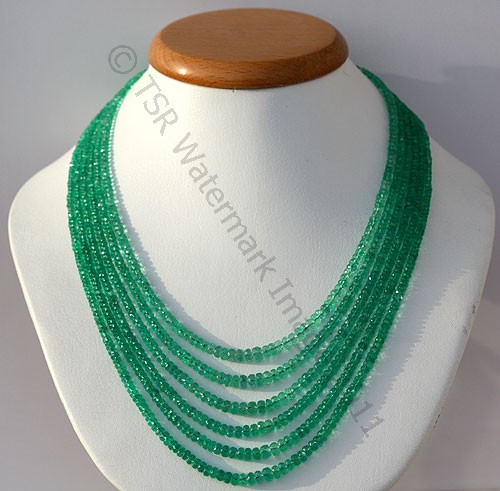With the demand for natural gemstones putting immense pressure on the market, there have been resurgent rise of composite gemstones too. Called by many names in the industry, assembled gemstones or hybrids are not 100% natural material. They contain the significant amount of man-made materials like glass, corundum, resin polymers and dyeing agents, but still command a position to reckon with. At least in the fashion and imitation jewellery industry assembled rubies, sapphires, emeralds and turquoise have a huge demand.
Let us dig a little about the hybrid or assembled rubies, sapphires gemstone and emerald beads.

Assemble gemstones: The definition:
An assembled gemstone is a combination of two or more materials. They could be singly natural or a blend of artificial and natural stones. For instance ruby and lead glass in Lead-glass filling gemstones. The commonly identified gemstones in the assembled categories are:
- Doublets and triplets
- Inlays
- Mabe pearls
- Reconstructed, re-crystallized and restructured gemstones
But is assembling really an alternative! Here are five popular reasons given by the manufacturers to give synthetic process a legitimate backing in the market.
- Give the gemstone a greater durability making them more wearable as a daily use accessory
- Boost the pricing and quality in terms of clarity, carat weight and fault filling
- Add desirable fillers and dyeing agents to make them more saleable
- Build a distinct family of gemstones that are hybrid, and not synthetic
Popular assemble gemstones:
Doublets and triplet Opals:
Without doubt, the doublets and triplets are popular as widely accepted hybrid gemstones. They are done exclusively for opals. White opal is used as a sandwich in triple layers, where the base is a black backing glass material, while the top surface is a translucent plastic that delivers a higher refractive index.
Like a cementing, opal gemstones assembled as a doublet and triplets have the desired thickness and strength, without compromising on the lustre, refractive index, translucency and hardness.
Apart from the fragile gemstone like opal, lapis lazuli, black onyx, turquoise and quartz are other naturally extracted items cut into doublets and triplets for a fashionable market.
Mabe Pearls:
Cultured pearls are susceptible to scratches and breaking. Mabe pearls are assembled gemstones using a blister dome cut apart from the mother shell. Mabe pearls can be attached back-to-back as if they look like a single wholesome pearl.
Composite Hybrid rubies:
Rubies and sapphires often carry a fault that requires filling. Fillers like dyeing agents, polymer resins and lead glass are used in the faulty gemstones. Use of composite materials as a filler occurs as an indistinct process where it is hard to detect the presence of unnatural material using unaided vision.
Point of caution:
Assembled gemstones can’t be cleaned and maintained like regular natural stones. Techniques like ultra-sound cleaning and laser treatment can affect the bond, giving rise to visible fault lines.
As a buyer, you must look for hints in the gemstone surface to distinguish the assembled gemstones from the real ones. From weight in carats to their clarity, there are many ways assembled gemstones catch the attention of usual buyers.
Save
6eabd5cc-2f64-4983-8422-514ea3588de0|0|.0|27604f05-86ad-47ef-9e05-950bb762570c
Tags
: Sapphires Gemstone . Emerald Beads . Emerald Gemstones Beads . Sapphires Gemstone Beads